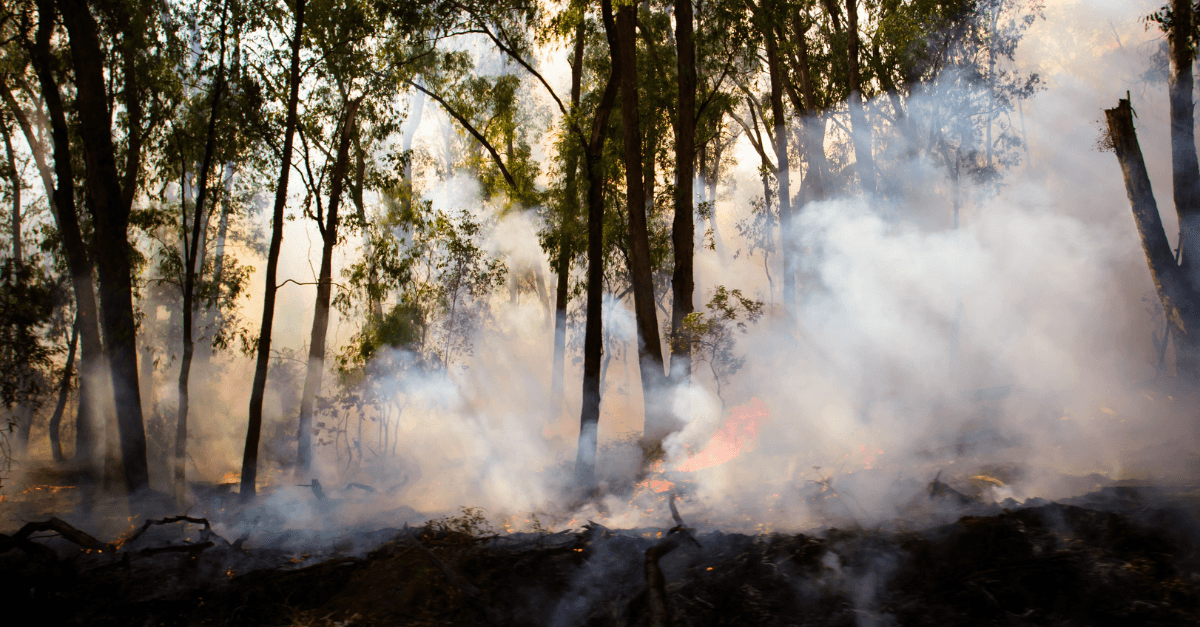


Climate Change and Insurance Risks
Climate change is no longer a distant issue; it’s here, and it’s reshaping the way insurers, brokers, and clients think about risk. From record-breaking floods to severe bushfires, extreme weather events are happening with greater frequency and intensity. For businesses and communities, this means higher exposure, more complex claims and an urgent need to rethink how insurance fits into long-term resilience planning.
Rising Risk, Rising Costs
The insurance industry is already seeing the effects of climate change in the form of increased claims and higher premiums. In 2022, insured catastrophe losses in eastern Australia hit a record AU$7 billion, largely driven by devastating floods (Australia Institute, 2024). At the same time, average home insurance premiums across the country rose by 14% between 2022 and 2023, the sharpest rise in a decade (Australia Institute, 2024).
For many households, this is becoming unsustainable: as of March 2024, around 15% of households were in “insurance stress,” with premiums costing more than four weeks of income, a figure that’s jumped almost 30% in just one year (Reuters, 2024). For brokers, these pressures highlight the need to guide clients through both the affordability challenge and the importance of adequate cover in high-risk areas.
Beyond the Policy
Insurance alone cannot eliminate climate risk, but it can be part of a broader strategy. Brokers are uniquely positioned to guide clients in building resilience by:
Identifying exposures: reviewing business locations, supply chains, and operational risks that may be impacted by climate events.
Exploring new coverages: from parametric policies that pay out on specific weather triggers, to specialist catastrophe cover for businesses in vulnerable sectors.
Encouraging risk management: recommending practical steps such as flood-proofing, fire-prevention strategies or diversifying supply chains. Some insurers are now requiring proactive risk management measures, such as plumbing safety checks, regular building inspections, and structured maintenance plans, as a condition of cover.
The Role of Innovation
Extreme weather claims have more than doubled in the past 30 years. Declared catastrophe losses now average 0.7% of GDP (Gross Domestic Product), up from 0.2% in the late 1990s. The cost to insurers has grown from around AU$2.1 billion per year historically to AU$4.5 billion annually in the past five years (Insurance Council of Australia, 2024).
Recent data also shows a shift in claims patterns: in 2023-24, insurers paid AU$2.19 billion in claims across nearly 157,000 events, 66,000 more than the year before, but with smaller average payouts per claim (Insurance Council of Australia, 2024). This suggests more widespread, smaller-scale damage is becoming the norm. For brokers, this means helping clients reassess their coverage limits, deductibles, and overall risk strategies in line with these evolving realities.
A Partnership Approach
For many businesses, climate change can feel overwhelming. A risk that’s too big to tackle. Brokers play a vital role in breaking down these challenges, translating complex insurance language into clear guidance, and advocating for clients when markets tighten. The goal isn’t just to secure a policy, but to be a partner in resilience and long-term planning.
Climate change is reshaping the risk environment for everyone, from multinational corporations to local businesses. At Sage Insurance, our brokers understand these shifts and our advise proactively guide their clients will not only strengthen relationships but also ensure businesses are better prepared for the challenges of tomorrow.
Contact Us
Email: hello@sageins.com.au
Phone: (03) 9969 2067
Address: Suite 14/18-34 Station Street, Sandringham VIC 3191
Climate change is no longer a distant issue; it’s here, and it’s reshaping the way insurers, brokers, and clients think about risk. From record-breaking floods to severe bushfires, extreme weather events are happening with greater frequency and intensity. For businesses and communities, this means higher exposure, more complex claims and an urgent need to rethink how insurance fits into long-term resilience planning.
Rising Risk, Rising Costs
The insurance industry is already seeing the effects of climate change in the form of increased claims and higher premiums. In 2022, insured catastrophe losses in eastern Australia hit a record AU$7 billion, largely driven by devastating floods (Australia Institute, 2024). At the same time, average home insurance premiums across the country rose by 14% between 2022 and 2023, the sharpest rise in a decade (Australia Institute, 2024).
For many households, this is becoming unsustainable: as of March 2024, around 15% of households were in “insurance stress,” with premiums costing more than four weeks of income, a figure that’s jumped almost 30% in just one year (Reuters, 2024). For brokers, these pressures highlight the need to guide clients through both the affordability challenge and the importance of adequate cover in high-risk areas.
Beyond the Policy
Insurance alone cannot eliminate climate risk, but it can be part of a broader strategy. Brokers are uniquely positioned to guide clients in building resilience by:
Identifying exposures: reviewing business locations, supply chains, and operational risks that may be impacted by climate events.
Exploring new coverages: from parametric policies that pay out on specific weather triggers, to specialist catastrophe cover for businesses in vulnerable sectors.
Encouraging risk management: recommending practical steps such as flood-proofing, fire-prevention strategies or diversifying supply chains. Some insurers are now requiring proactive risk management measures, such as plumbing safety checks, regular building inspections, and structured maintenance plans, as a condition of cover.
The Role of Innovation
Extreme weather claims have more than doubled in the past 30 years. Declared catastrophe losses now average 0.7% of GDP (Gross Domestic Product), up from 0.2% in the late 1990s. The cost to insurers has grown from around AU$2.1 billion per year historically to AU$4.5 billion annually in the past five years (Insurance Council of Australia, 2024).
Recent data also shows a shift in claims patterns: in 2023-24, insurers paid AU$2.19 billion in claims across nearly 157,000 events, 66,000 more than the year before, but with smaller average payouts per claim (Insurance Council of Australia, 2024). This suggests more widespread, smaller-scale damage is becoming the norm. For brokers, this means helping clients reassess their coverage limits, deductibles, and overall risk strategies in line with these evolving realities.
A Partnership Approach
For many businesses, climate change can feel overwhelming. A risk that’s too big to tackle. Brokers play a vital role in breaking down these challenges, translating complex insurance language into clear guidance, and advocating for clients when markets tighten. The goal isn’t just to secure a policy, but to be a partner in resilience and long-term planning.
Climate change is reshaping the risk environment for everyone, from multinational corporations to local businesses. At Sage Insurance, our brokers understand these shifts and our advise proactively guide their clients will not only strengthen relationships but also ensure businesses are better prepared for the challenges of tomorrow.
Contact Us
Email: hello@sageins.com.au
Phone: (03) 9969 2067
Address: Suite 14/18-34 Station Street, Sandringham VIC 3191
Climate change is no longer a distant issue; it’s here, and it’s reshaping the way insurers, brokers, and clients think about risk. From record-breaking floods to severe bushfires, extreme weather events are happening with greater frequency and intensity. For businesses and communities, this means higher exposure, more complex claims and an urgent need to rethink how insurance fits into long-term resilience planning.
Rising Risk, Rising Costs
The insurance industry is already seeing the effects of climate change in the form of increased claims and higher premiums. In 2022, insured catastrophe losses in eastern Australia hit a record AU$7 billion, largely driven by devastating floods (Australia Institute, 2024). At the same time, average home insurance premiums across the country rose by 14% between 2022 and 2023, the sharpest rise in a decade (Australia Institute, 2024).
For many households, this is becoming unsustainable: as of March 2024, around 15% of households were in “insurance stress,” with premiums costing more than four weeks of income, a figure that’s jumped almost 30% in just one year (Reuters, 2024). For brokers, these pressures highlight the need to guide clients through both the affordability challenge and the importance of adequate cover in high-risk areas.
Beyond the Policy
Insurance alone cannot eliminate climate risk, but it can be part of a broader strategy. Brokers are uniquely positioned to guide clients in building resilience by:
Identifying exposures: reviewing business locations, supply chains, and operational risks that may be impacted by climate events.
Exploring new coverages: from parametric policies that pay out on specific weather triggers, to specialist catastrophe cover for businesses in vulnerable sectors.
Encouraging risk management: recommending practical steps such as flood-proofing, fire-prevention strategies or diversifying supply chains. Some insurers are now requiring proactive risk management measures, such as plumbing safety checks, regular building inspections, and structured maintenance plans, as a condition of cover.
The Role of Innovation
Extreme weather claims have more than doubled in the past 30 years. Declared catastrophe losses now average 0.7% of GDP (Gross Domestic Product), up from 0.2% in the late 1990s. The cost to insurers has grown from around AU$2.1 billion per year historically to AU$4.5 billion annually in the past five years (Insurance Council of Australia, 2024).
Recent data also shows a shift in claims patterns: in 2023-24, insurers paid AU$2.19 billion in claims across nearly 157,000 events, 66,000 more than the year before, but with smaller average payouts per claim (Insurance Council of Australia, 2024). This suggests more widespread, smaller-scale damage is becoming the norm. For brokers, this means helping clients reassess their coverage limits, deductibles, and overall risk strategies in line with these evolving realities.
A Partnership Approach
For many businesses, climate change can feel overwhelming. A risk that’s too big to tackle. Brokers play a vital role in breaking down these challenges, translating complex insurance language into clear guidance, and advocating for clients when markets tighten. The goal isn’t just to secure a policy, but to be a partner in resilience and long-term planning.
Climate change is reshaping the risk environment for everyone, from multinational corporations to local businesses. At Sage Insurance, our brokers understand these shifts and our advise proactively guide their clients will not only strengthen relationships but also ensure businesses are better prepared for the challenges of tomorrow.
Contact Us
Email: hello@sageins.com.au
Phone: (03) 9969 2067
Address: Suite 14/18-34 Station Street, Sandringham VIC 3191





